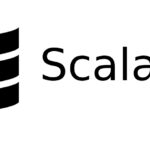
In the vast landscape of programming languages, Rust has emerged as a powerful programming language, gaining popularity for its focus on performance, safety, and concurrency. Designed with the goal of providing a modern alternative for systems programming, Rust has garnered attention from developers, industry experts, and major tech companies. In this blog post, we will delve into the world of Rust, exploring its unique features, advantages, and its potential to pave the way for systems programming in the future.
A Safe and Performant Foundation
One of the standout features of Rust is its strong emphasis on memory safety without compromising performance. Unlike languages like C and C++, Rust enforces strict rules at compile-time that prevent common programming errors such as null pointer dereferences, buffer overflows, and data races. By leveraging its ownership, borrowing, and lifetimes system, Rust provides memory safety guarantees, eliminating the need for manual memory management and reducing the risk of bugs and vulnerabilities in critical systems.
Concurrency Made Easy
In the era of multicore processors and distributed systems, concurrent programming has become crucial. Rust embraces the challenge of concurrent programming with its ownership model and lightweight, zero-cost abstractions. It offers features like threads, message passing, and a safe shared mutable state through the concept of “ownership.” This allows developers to write concurrent code that is free from data races, deadlocks, and other common pitfalls associated with concurrent programming.
Developer Productivity and Expressiveness
Rust aims to provide a developer-friendly experience without sacrificing performance or safety. It offers modern language features like pattern matching, closures, and a powerful package manager called Cargo. The expressive syntax and rich set of libraries make Rust a joy to work with. The language also emphasizes code reusability and modularity, fostering the creation of reusable libraries and enabling rapid development.
Industry Adoption and Use Cases
Rust’s unique blend of performance, safety, and concurrency has attracted attention from major companies and projects across various domains. Companies like Mozilla, Dropbox, and Microsoft have adopted Rust for critical components of their systems. Rust is particularly well-suited for systems programming, embedded systems, network services, game development, and blockchain infrastructure. Its combination of safety and performance makes it an excellent choice for building high-performance software with minimal risk.
Growing Community and Ecosystem
Rust boasts an active and welcoming community, which contributes to its rapid growth and ecosystem development. The Rust community actively maintains an extensive collection of libraries, frameworks, and tools, enabling developers to build a wide range of applications and systems. With a growing number of conferences, meetups, and online resources, developers have ample opportunities to learn and collaborate within the Rust community.
Conclusion
Rust has emerged as a programming language that combines the performance of low-level systems programming with the safety and expressiveness of modern languages. Its unique features, such as memory safety, concurrency, and developer productivity, position it as a strong contender for systems programming in the future. With its growing adoption by industry leaders and a vibrant community driving its ecosystem forward, Rust is paving the way for a new era of performant, safe, and concurrent software development. As Rust continues to evolve, we can expect to see even greater advancements and wider adoption across various domains.













































Recent Comments